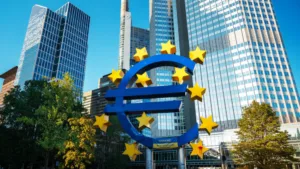When you purchase through links on our site, we may earn an affiliate commission. This doesn’t affect our editorial independence.
Finally! The EU did something that helps everybody. Starting June 20th, every phone and tablet sold in Europe will have a label showing how long it’ll really last. There will be no more marketing about “premium materials” that don’t last. The New EU Energy Labels for Smartphones & Tablets Begin June 2025.
This whole mess started because Europe is drowning in broken phones. Millions of tons of the things get thrown away every year, mostly because companies make them impossible to fix on purpose. The EU got fed up and decided to force some transparency.
What the New EU Energy Labels for Smartphones & Tablets Mean
Six different things get rated now, and they’re all things that actually matters:
Battery life – not the fake “all day battery” claims, but how many years before it turns into garbage. Software updates – will you still get security patches in three years or are you stuck with whatever bugs exist now?
Drop resistance gets tested properly instead of relying on whatever the marketing department made up. Water protection ratings have to be real, not just “splash resistant” nonsense.
Repair stuff is huge though. The label shows whether you can actually fix the thing when it breaks, or if you’re supposed to buy a new one like the companies want. Plus whether repair shops can get parts and manuals instead of being told “just buy our newest model.”
Grading works like those stickers on refrigerators. A means it’s built right, F means it’s designed to break.
Why This Is Actually a Big Deal

Most people keep phones way longer than companies want them to. Three to five years is normal, but good luck figuring out which phones will survive that long before you buy one.
Now you walk into any store and immediately see which ones are built to last versus which ones are designed to fail. No more gambling with expensive purchases.
The European Commission says Europe throws away 16 million tons of electronics annually. Most of it could be fixed if companies didn’t make everything sealed up and unrepairable.
One EU person said it perfectly: phone companies have been “encouraging consumers to build smarter, not faster.” About time someone called them out.
Big Companies Are Scrambling
Apple started putting durability info on iPhone boxes because they know people will actually read these labels. Smart move since their phones usually last longer than the competition anyway. This is thanks to the
Finally! The EU did something that helps everybody. Starting June 20th, every phone and tablet sold in Europe will have a label showing how long it’ll really last. There will be no more marketing about “premium materials” that don’t last. The New EU Energy Labels for Smartphones & Tablets Begin June 2025.
This whole mess started because Europe is drowning in broken phones. Millions of tons of the things get thrown away every year, mostly because companies make them impossible to fix on purpose. The EU got fed up and decided to force some transparency.
What the New EU Energy Labels for Smartphones & Tablets Mean
Six different things get rated now, and they’re all things that actually matters:
Battery life – not the fake “all day battery” claims, but how many years before it turns into garbage. Software updates – will you still get security patches in three years or are you stuck with whatever bugs exist now?
Drop resistance gets tested properly instead of relying on whatever the marketing department made up. Water protection ratings have to be real, not just “splash resistant” nonsense.
Repair stuff is huge though. The label shows whether you can actually fix the thing when it breaks, or if you’re supposed to buy a new one like the companies want. Plus whether repair shops can get parts and manuals instead of being told “just buy our newest model.”
Grading works like those stickers on refrigerators. A means it’s built right, F means it’s designed to break.
Why This Is Actually a Big Deal


Credit: Techpolyp.com
Most people keep phones way longer than companies want them to. Three to five years is normal, but good luck figuring out which phones will survive that long before you buy one.
Now you walk into any store and immediately see which ones are built to last versus which ones are designed to fail. No more gambling with expensive purchases.
The European Commission says Europe throws away 16 million tons of electronics annually. Most of it could be fixed if companies didn’t make everything sealed up and unrepairable.
One EU person said it perfectly: phone companies have been “encouraging consumers to build smarter, not faster.” About time someone called them out.
Big Companies Are Scrambling
Apple started putting durability info on iPhone boxes because they know people will actually read these labels. Smart move since their phones usually last longer than the competition anyway.
Samsung promised seven years of updates for their fancy Galaxy phones starting with the S25. Probably figured out that repair ratings were going to hurt them otherwise.
Google is pushing their Pixel repair programs harder in Europe too. Everyone’s trying to avoid getting stuck with bad ratings right there on the shelf.
Shopping for phones is about to get completely different. Instead of just looking at cameras and screens, people will filter by which ones actually work long-term.
What Happens Next After the New EU Energy Labels for Smartphones & Tablets
This probably changes how phones get made everywhere, not just Europe. Companies aren’t going to design separate “European repairable versions” – too expensive and complicated.
Making everything more durable and repairable is just going to become standard. Sustainability isn’t just for environmental activists anymore – regular people are sick of replacing expensive stuff constantly.
Stores have to show these labels everywhere – in person, online, wherever phones get sold. No hiding the ratings in tiny print somewhere.
Other countries are definitely watching this. If it works in Europe, expect the same rules to spread. Phone companies know this too, which is why they’re already adapting instead of fighting it.
Finally, buyers get real information instead of marketing lies about durability. Check the European Commission’s regulation details for the full story on how this system works.
Samsung promised seven years of updates for their fancy Galaxy phones starting with the S25. Probably figured out that repair ratings were going to hurt them otherwise.
Google is pushing their Pixel repair programs harder in Europe too. Everyone’s trying to avoid getting stuck with bad ratings right there on the shelf.
Shopping for phones is about to get completely different. Instead of just looking at cameras and screens, people will filter by which ones actually work long-term.
What Happens Next After the New EU Energy Labels for Smartphones & Tablets
This probably changes how phones get made everywhere, not just Europe. Companies aren’t going to design separate “European repairable versions” – too expensive and complicated.
Making everything more durable and repairable is just going to become standard. Sustainability isn’t just for environmental activists anymore – regular people are sick of replacing expensive stuff constantly.
Stores have to show these labels everywhere – in person, online, wherever phones get sold. No hiding the ratings in tiny print somewhere.
Other countries are definitely watching this. If it works in Europe, expect the same rules to spread. Phone companies know this too, which is why they’re already adapting instead of fighting it.
Finally, buyers get real information instead of marketing lies about durability. Check the European Commission’s regulation details for the full story on how this system works.







